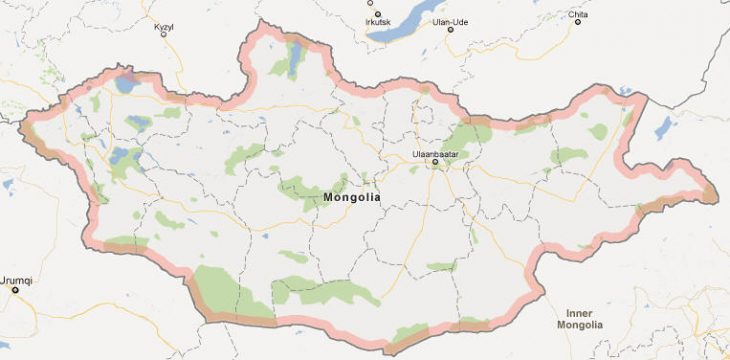Mongolia Facts
Mongolia, a state in inner Asia between the Russian Federation in the north and China in the south; 1.6 million km², 3.2 million residents (2019).Mongolia was formerly sometimes called Outer Mongolia (unlike Inner Mongolia, an autonomous region of northern China). Administratively, Mongolia consists of three urban areas and 18 provinces. The capital is Ulaanbaatar (1.4 million residents, 2019).

Country facts
- Boggd Najramdach Mongol Ard Uls / Mongolia
- Country abbreviation: MN
- Area: 1.6 million km²
- Population (2019): 3.2 million residents
- Capital: Ulaanbaatar
- Main language: Mongolian
- State: Republic
- Head of State: Chaltmaagijn Battulga (President)
- Head of Government: Uchnaagijn Chürelsüch
- Per capita GDP (2018): US $ 4,104
- GNI per capita (2018): US $ 3,580
- Coin unit: 1 tea tree = 100 polygon
- Currency code: MNT
- Country Dialing (Telephony): 976
- Internet domain name: mn
- Time difference compared to Sweden: +7 to +9
- National Day: July 11 (Independence Day, 1921)
Nature
- Land use: forest (8%), agricultural land (1%), pasture land (75%), other (16%)
- Highest mountain: Youyi Feng (4,374 m asl)
Population
- Population density (2019): 2 residents per km²
- Natural population growth (2019): 1.9%; birthrate 25 ‰, deathrate 6 ‰
- Age structure (2019): 0-14 years (31%), 15-64 (65%), 65- (4%)
- Life expectancy (2019): men 66 years, women 76 years
- Infant mortality (2019): 13 per 1,000 live births
- Population forecast 2050: 4 million residents
- HDI (2017): 0.741 (place 92 of 189)
- Urbanization rate (2019): 68%
- Most populous cities (2019): Ulaanbaatar (1.4 million residents), Erdenet (99,500), Darchan (84,700)
Business
- Industry’s contribution to GDP (2017): agriculture (12%), industry (38%), service (50%)
- Exports (2017): US $ 5,834 million
- Main export products: minerals, housing, clothing
- Main exporting countries: China, United Kingdom
- Imports (2017): US $ 4 345 million
- Main import products: machinery, fuel, means of transport
- Main importing countries: China, Russian Federation, Japan
- Railway network (2017): 1 800 km
In western Mongolia, the coniferous forests of the Altaj and Changaj mountain ranges, and in the south the country consists of a wavy high plateau with steppe and desert. The river Selenge flows up into the mountains to the north and flows into Lake Baikal on the Russian Federation. Some minor rivers flow into shallow lakes within the northwest highlands, but most of the country lacks drainage. Mongolia has a large number of extinguished volcanoes as well as hot springs. The country has a pronounced continental climate with large temperature differences during the year and during the day as well as little rainfall.
The constitution prescribes a parliament, which is elected for four years. The president, who is elected for four years, has limited powers of power. The country was declared an independent republic in 1924.
Traditionally nomadic livestock management has been Mongolia’s most dominant industry, but since the 1950s a more diverse economy has emerged. In the cities, modern monetary economy prevails, while the rural population relies on self-management and barter. The mining industry is the country’s most important export industry. The economically most important agricultural product is cashmere wool; the country accounts for one third of the world’s production. Drought, floods, winter cold and huge amounts of snow in 2000/01 and 2009/10 meant that a large part of the population needed emergency assistance and the country received international assistance.
Mongolia Map














































